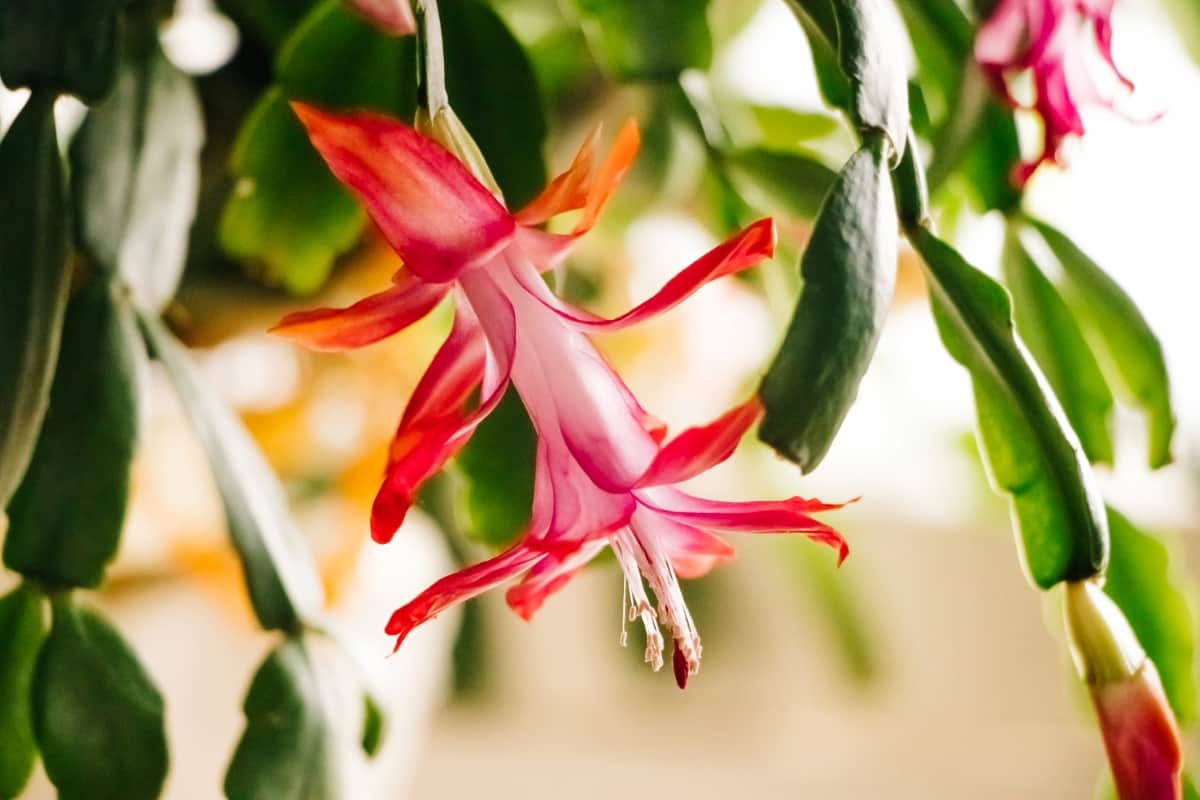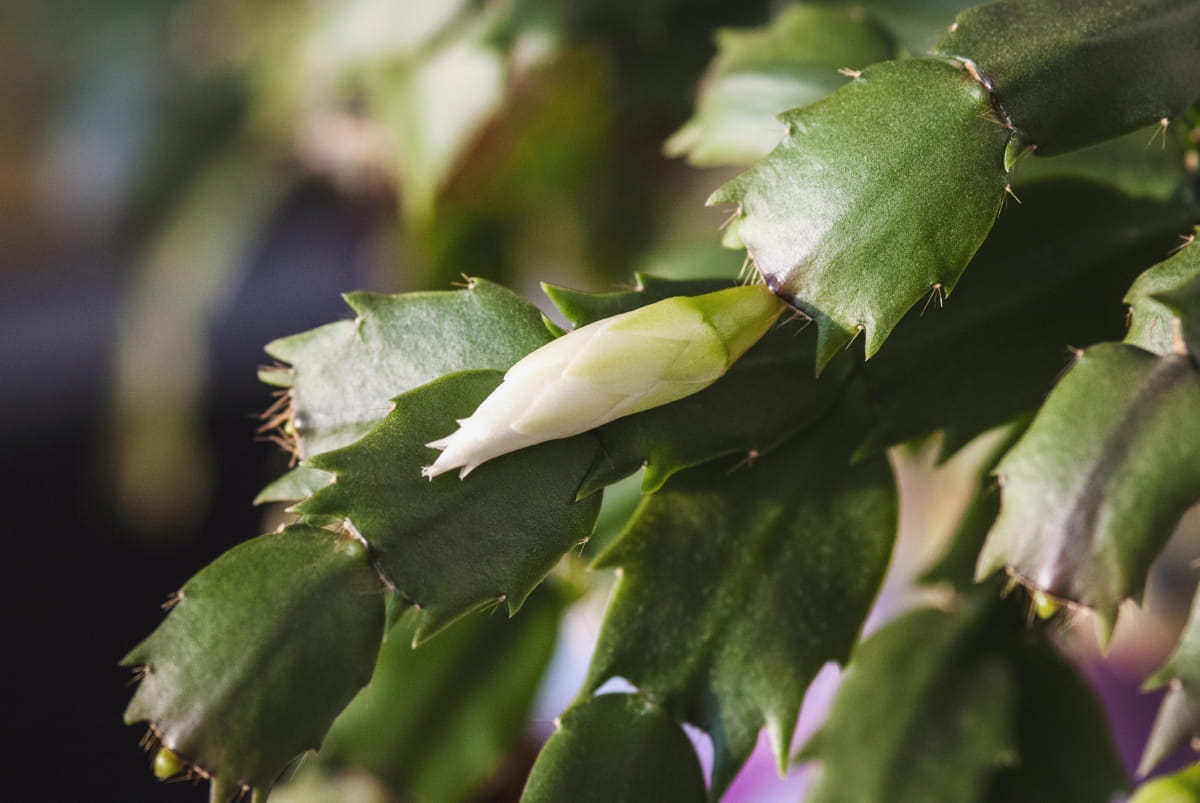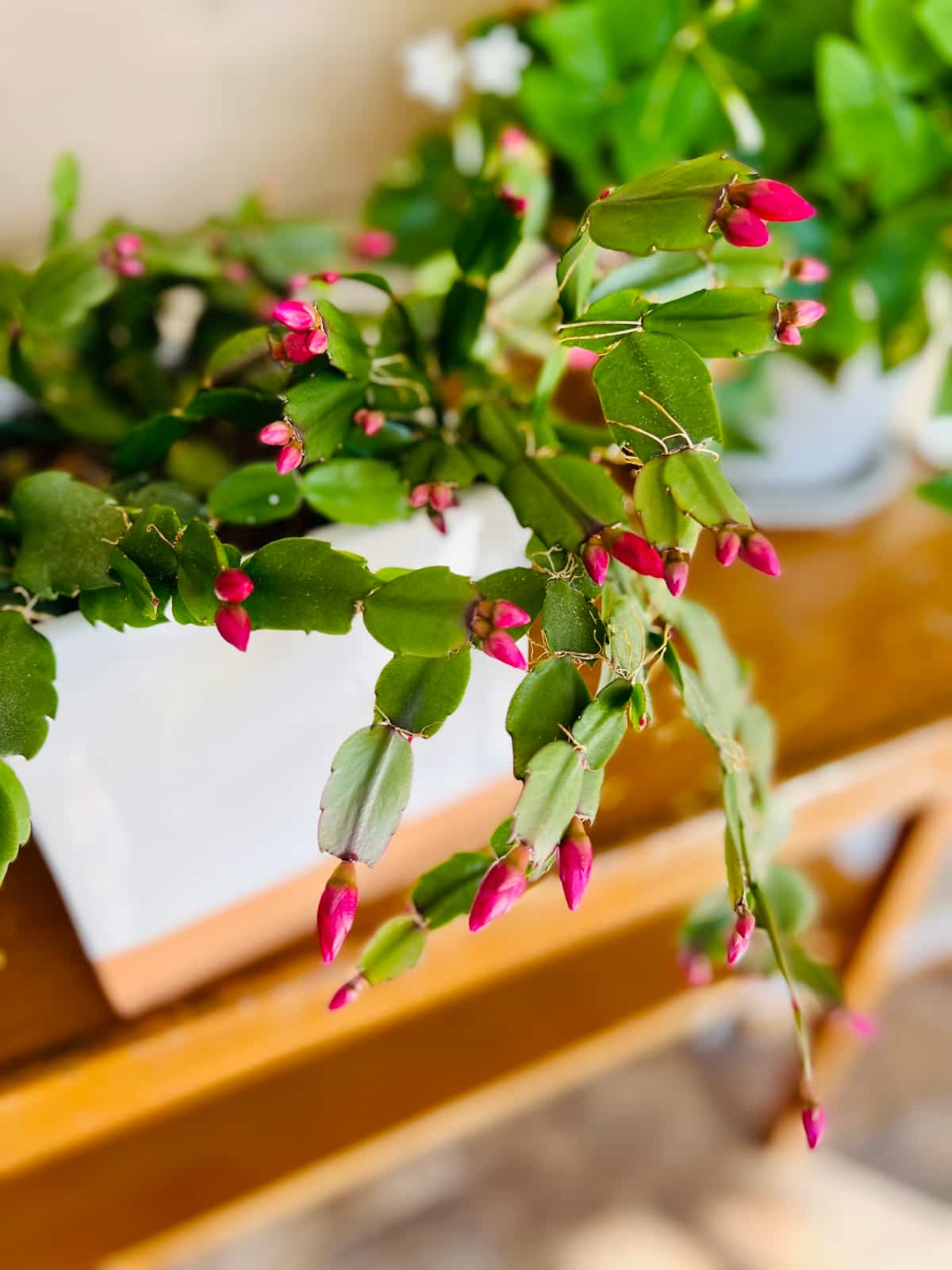The Christmas Cactus, also known as Schlumbergera, is a popular houseplant that produces beautiful blooms during the holiday season. However, it can be frustrating when your Christmas Cactus fails to bloom. To help you get your Christmas Cactus to bloom, it’s important to understand its blooming cycle.

Christmas Cacti are considered short-day plants, which means they require longer periods of darkness to initiate blooming. In its natural habitat, the Christmas Cactus blooms in response to the shorter days and longer nights of winter. However, when grown indoors, the lack of natural light can disrupt its blooming cycle.
Christmas Cactus Not Blooming
What Triggers a Christmas Cactus to Bloom
Temperature: Christmas Cacti require cooler temperatures to initiate blooming. During the day, maintain a temperature of around 21-24°C and reduce it to 15-18°C at night. This temperature drop mimics the natural conditions the plant experiences in its native habitat.
Light: As mentioned earlier, Christmas Cacti require longer periods of darkness to bloom. To ensure your plant receives enough darkness, place it in a room where it won’t be exposed to artificial light during the night. Avoid placing it near bright windows or areas with artificial lighting during the evening hours.
Providing Optimal Growing Conditions: How Do I Keep My Christmas Cactus Blooming?
Proper Watering Techniques
- Watering: Water your Christmas Cactus thoroughly when the top inch of the soil feels dry. Allow excess water to drain away, and never let the plant sit in standing water.
- Avoid Overwatering: It can cause root rot and prevent blooming. Make sure the pot has drainage holes, and avoid watering too frequently.
- Reduce Watering in Winter: During the winter months, when the plant is in its resting phase, reduce watering. Wait until the soil dries out slightly between waterings.
Temperature and Light Requirements to Induce Blooming
Christmas cacti thrive in temperatures between 15°C-21°C. This temperature range mimics their natural environment, enabling optimal growth and blooming. It is crucial to avoid temperature extremes, as they can hinder the blooming process. Avoid placing your Christmas cactus near drafts, heating vents, or direct sunlight, as these can lead to temperature fluctuations.
In case you missed it: 9 Reasons Why Your Christmas Cactus is Turning Yellow: Treatment, Prevention, and Solutions

Christmas cacti are known to be “short-day” plants, meaning they require longer periods of darkness to initiate blooming. To encourage flower production, give your Christmas cactus around 12-14 hours of darkness each day for about six weeks before you want it to bloom. This can be achieved by moving the plant to a room with minimal artificial light during the evening hours. It’s important to note that during this period, the cactus should still receive bright, indirect light for the remaining 10-12 hours of the day.
Feeding the Christmas Cactus for Abundant Flowers
Proper nutrition is key to ensuring abundant flower production in your Christmas cactus. You can use a balanced, water-soluble fertilizer formulated specifically for cacti and succulents to feed your cactus. Fertilize your Christmas cactus every two weeks during the growing season, typically from spring to early fall.
Be sure to dilute the fertilizer as per the manufacturer’s instructions to prevent overfeeding, which can be detrimental to the plant. During the dormant period from late fall to winter, it is important to reduce fertilization. This allows the Christmas cactus to rest and prepare for the upcoming blooming season. Refrain from fertilizing your cactus during this time to avoid stimulating unwanted growth.
Pruning and Shaping to Enhancing Blooming Potential
Pruning and shaping your Christmas cactus can significantly enhance its blooming potential. Regular pruning helps maintain a compact and bushy shape while encouraging new growth and, subsequently, more flowers. Pruning should be done after the blooming period has ended, typically in late spring or early summer. Start by removing dead or damaged stems or segments, if any.
Then, using clean and sharp pruning shears, you can trim back the plant to the desired size or shape. While pruning, it is also a good opportunity to propagate your Christmas cactus. Simply take the cuttings and allow them to dry for a day or two before planting them in a well-draining potting mix. This way, you can expand your collection of Christmas cacti while enhancing blooming potential.
Managing Dormancy Periods of Christmas Cactus for Blooming
To initiate dormancy, reduce watering gradually in late fall, allowing the soil to become slightly drier between waterings. Additionally, decrease the temperature to around 10-13°C and give your Christmas cactus reduced light exposure. This mimics the natural conditions it would experience in its native environment.
During the dormancy period, which typically lasts about six weeks, it is important to avoid fertilizing and limit watering to prevent overhydration. However, it is essential to monitor the plant to ensure it does not become completely dry. After the dormancy period, gradually increase watering and resume normal care routines. This will signal the plant to enter its active growth phase, leading to the development of flower buds and a beautiful blooming display.
Propagation Methods to Increase Chances of Blooming
Propagation from Christmas cactus cuttings is an effective way to increase the chances of blooming. To start, choose healthy stems around 2-3 segments long. Remove the bottom segment and place the cutting in a well-draining soil mix. Keep the soil moist but not waterlogged. Provide indirect light and maintain a temperature of around 21°C.
In case you missed it: How to Revive an Overwatered Christmas Cactus: Treatment and Solutions

After a few weeks, roots will develop, signaling successful propagation. Once rooted, gradually introduce the cutting to brighter light and slightly cooler temperatures. This will encourage bud formation and increase the chances of blooming. Remember to avoid overwatering and provide occasional fertilization to support healthy growth.
How Often Do Christmas Cactus Bloom
Christmas cacti, also known as Schlumbergera, typically bloom once a year. These beautiful plants usually flower during the winter holiday season, so they are often associated with Christmas. With proper care and the right conditions, Christmas cacti can produce stunning blooms in shades of pink, red, white, or purple. While the exact timing can vary, it is common for Christmas cacti to bloom from late November through December, adding a festive touch to any home or garden.
Indoor Christmas Cactus Blooming: How to Do It
First, provide the cactus with the right amount of light. Place it in a bright location, but avoid direct sunlight. Next, maintain the proper temperature, keeping it around 21-24°C during the day and slightly cooler at night. Additionally, ensure that the cactus is in a well-draining potting mix and water it thoroughly when the top inch of soil feels dry. During the blooming period, reduce watering slightly. Finally, provide a period of darkness for the cactus for about 12-14 hours every day for 6-8 weeks to encourage blooming.
Troubleshooting Why Christmas Cactus Not Blooming
- One possible reason is insufficient light. Christmas cacti prefer bright, indirect light, so make sure it is placed in a well-lit area.
- Another reason could be improper watering. Overwatering or underwatering can prevent blooming, so ensure the soil is moist evenly but not waterlogged.
- Additionally, temperature fluctuations can affect blooming. Christmas cacti require cool nights and warm days to initiate flower buds.
- Lastly, a lack of nutrients can also hinder blooming. Fertilize your Christmas cactus plant with a balanced, water-soluble fertilizer during the growing season.
In case you missed it: How to Grow and Care for a Christmas Cactus Houseplant: Instructions for Beginners

Conclusion
By following these steps, you can help your Christmas cactus bloom again and enjoy its vibrant flowers during the holiday season. Remember to be patient, as it may take some time for the plant to respond to the changes you make. With proper care, your Christmas cactus will bloom beautifully in no time.
- Ultimate Guide to Ossabaw Island Hog: Breeding, Raising, Diet, and Care
- Ultimate Guide to Juliana Pig: Raising Facts, Size, Diet, Care, and Lifespan
- Raising Lleyn Sheep: Disadvantages, Price, Uses, Characteristics, and Care
- Ultimate Guide to Meishan Pig: Breed Facts, Breeding, Raising, and Care
- Ultimate Guide to Teacup Pigs: Raising, Diet, Lifespan, Cost, and Care
- Guide to Raising Poll Dorset Sheep: Facts, Profile, Characteristics, Uses, and Care
- Ultimate Guide to Bighorn Sheep: Characteristics, Diet, Lifespan, Breeding, and Lifecycle
- Ultimate Guide to Raising Katahdin Sheep: Farming Facts, Breed Profile, Uses, and Care
- Ultimate Guide to Raising Oreo Cows: Belted Galloways Farming Facts, Profile, Uses, and Care